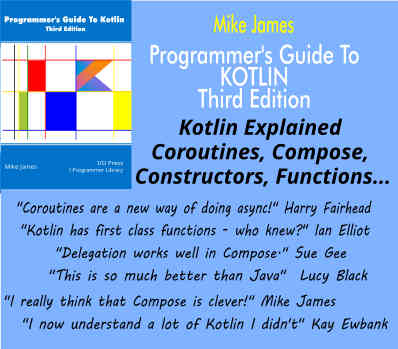| Brendan Eich Has Seen The Future - Video Streaming Using Just JavaScript |
| Written by Mike James |
| Saturday, 04 May 2013 |
|
Brendan Eich claims today that the new Orbx.js video codec is a game changer. The facts are few, but if Eich says so we need to study what few there are. Mozilla has been working on various video streaming projects in an effort to get rid of patented codecs within Firefox and the latest announcement is that it has joined forces with a OTOY, a company known for its rendering software. The result of the joint effort is Orbx.js, an HD codec which uses nothing but JavaScript and WebGL and is free of any intellectual property belonging to anyone else. In a a blog post entitled "Today I Saw The Future", Eich says: ORBX.js, a downloadable HD codec written in JS and WebGL. The advantages are many. On the good-for-the-open-web side: no encumbered-format burden on web browsers, they are just IP-blind runtimes. Technical wins start with the ability to evolve and improve the codec over time, instead of taking ten years to specify and burn it into silicon. What this means is that any browser that provides a modern fast JavaScript engine can decode HD video streams without requiring a plugin or native code extension. It also seems that the codec is a step in the right direction from a technical point of view: 25% better compression than H.264 for competitive quality, adaptive bit-rate while streaming, integer and (soon) floating point coding, better color depth, better intra-frame coding, a more parallelizable design — the list goes on. You can see it in action in the following video:
This is great news but hardly a reason for declaring "Today I Saw The Future". It seems that all concerned see more in a simple codec than you and I. At a press demo, OTOY showed a Mac OS X desktop running in a VM somewhere in the cloud with the display rendered to Firefox using Orbx.js. The idea is that the browser can become the universal platform by running virtual desktop environments in the cloud and displaying the result in the browser. You might think that you have heard all of this before in the form of X11 or Microsoft's remote desktop or any of the many remote solutions, but Eich claims that this is new. "Native apps from any popular OS, in the GPU cloud and on your browser. Yes, both: this is not just remote desktop tech, or X11 reborn via JS. Many local/remote hybrid computation schemes are at hand today, e.g. a game can do near-field computing in the browser on a beefy client while offloading lower LOD work to the GPU cloud." It could well be, but at the moment the evidence is thin on the ground with no details of the hosting or the APIs in use. It appears that whole applications are being run in the cloud and their output viewed on the browser. OTOY has stated that it will charge a few hundred dollars per year to support a using user's virtual desktop. The demos include running Autodesk 3DS and Valve's Steam:
What is significant is that the term "GPU cloud" keeps cropping up. "OTOY’s cloud application hosting software enables CPU and GPU draw commands to be virtualized on a server and then remotely rendered inside a standard HTML5 Web page using the ORBX.js library." This is also the solution to DRM as well as to hosting desktop software. Apparently this cloud operation is fast enough to deliver streaming video with enough time over to include a unique watermark within the video stream which can be used to identify the user who has downloaded the video. If the user keeps the video, copies it for their own use or even lends it to another user then no problem. However, if the video turns up on a P2P site then the watermark leads straight back to the owner so that they can be taken to court. This is better than DRM in that it controls only the apparent illegal use of the material and not the freedoms to use the material. However, there are so many unanswered questions and clear difficulties in implementing this scheme that it can hardly be seen as a practical proposal until more details are available. So what does this future look like? It is great that we have a JavaScript codec - only it really is just a decoder. The point is that we have no details of the coder or the coding scheme, which seem to belong to OTOY. Yes, the decoder might well be open source, but if you can only use it to decode streams coded by OTOY it isn't of much use. This could also provide a revenue stream fof OTOY as it could charge for the coder or coding services. The same is true of the desktop and app in the GPU cloud. Whose GPU cloud? Whose technology? OTOY seems to be the only candidate and again it could make big money charging for their use. Finally the DRM replacement is again powered by OTOY's GPU cloud. This all seems like a strange setup for Mozilla to get involved in. It might be that the full codec is open source and that there are no intellectual property claims on the actual details of the coding scheme and this would make the situation a little more palatable. However, this still leaves the matter of the openness of the GPU cloud and its associated APIs to trouble us. If anyone has any hard facts please let us know.
In the meantime we have to trust that Mozilla, and Brendan Eich in particular, are not being sold a utopian view of a slightly dystopian future.
More InformationRelated ArticlesJavaScript creator talks about the future River Trail - Intel's parallel JavaScript Go Beyond Responsive Design With JavaScript Capturing
To be informed about new articles on I Programmer, install the I Programmer Toolbar, subscribe to the RSS feed, follow us on, Twitter, Facebook, Google+ or Linkedin, or sign up for our weekly newsletter.
Comments
or email your comment to: comments@i-programmer.info
|
| Last Updated ( Saturday, 04 May 2013 ) |


